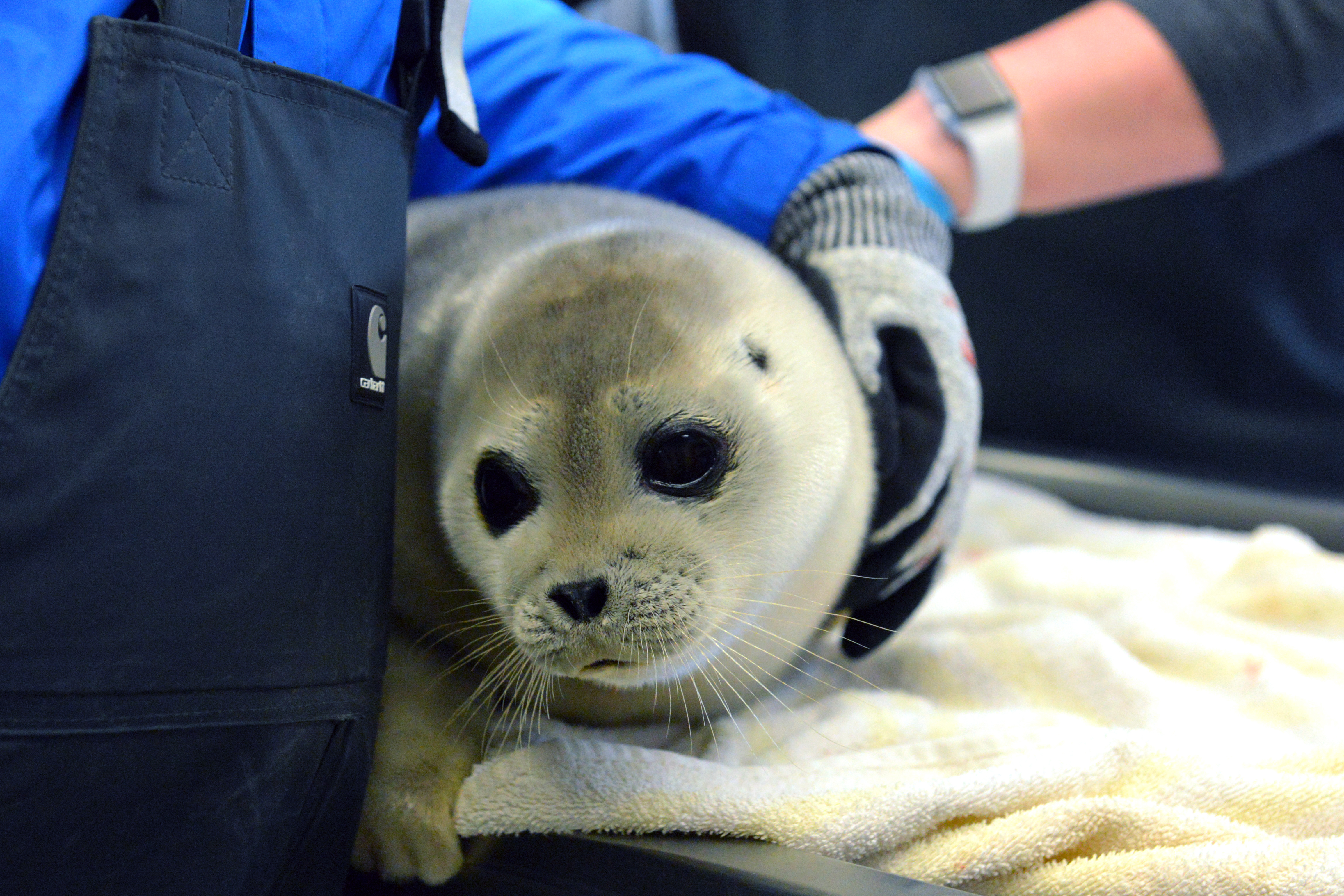A new critical habitat designation is on the way for ringed seals, after US courts uphold threatened listing
The move follows recent court rulings that upheld the listing of another ice-dependent seal species, the bearded seal.

A new proposal for critical habitat across Alaska’s Arctic marine environment is on the way now that a federal appeals court has upheld Endangered Species Act protections for the ringed seal.
The 9th Circuit Court of Appeals last month ruled that the National Oceanic and Atmospheric Administration acted lawfully when it listed ringed seals as threatened. That ruling came three weeks after the U.S. Supreme Court let stand an Endangered Species Act listing for bearded seals, another case in which a federal appeals court upheld a listing for an ice-dependent Arctic seal species.
The ringed seal ruling rejected a challenge by oil industry groups and others to the 2012 listing decision made by NOAA’s National Marine Fisheries Service. In its listing decision, NMFS classified three subspecies as threatened — including the subspecies that lives in Alaska waters — and two others as endangered.
The original listing of the ringed seal resulted in a 2014 proposal from NMFS to designate a large swathe of Arctic territory as critical habitat for the species, a place where special protections would apply. The proposal was to designate about 350,000 square miles – comprising the northern Bering Sea, the Chukchi Sea and the Beaufort Sea – as critical habitat for the ringed seal. The area, more than twice the size of California, would be the largest designated critical habitat in U.S. territory.
The oil industry and other development supporters objected to the scope, expressing concerns about potential new limits to activities.
The critical habitat designation process, a requirement for Endangered Species Act listings, was put on hold pending the outcome of litigation over the ringed seal listing. Further action on critical habitat will proceed once some legal requirements are met, said Julie Speegle, Alaska spokeswoman for NOAA.
“The agency must wait first for the court of appeals to issue its mandate and then for the district court to enter the final judgment for the listing to go into effect. We expect that those events will happen within the next two months,” Speegle said in an email after the 9th Circuit Court issued its ruling. “Once the listing is reinstated, NOAA Fisheries will evaluate information on habitat requirements for Arctic ringed seals to develop a proposed designation of critical habitat, which will include opportunities for public comment.”
The ringed seal case parallels the bearded seal case. For each species of seal, NMFS issued a listing decision that cited Arctic warming and loss of Arctic sea ice as justification for listing. For both the bearded seal and the ringed seal, NMFS analysis concluded that there was a risk of species extinction by the end of the 21st century.
U.S. District Court Judge Ralph Beistline in 2016 struck down the threatened listing for the Arctic ringed seal — the subspecies in Alaska waters — as “arbitrary and capricious,” just as he struck down the listing for the bearded seal in a separate appeal by the same parties. Beistline ruled that the Arctic ringed seal population is strong and healthy, and that predictions of extinction risk were speculative; he came to the same conclusion in the case challenging listing of the bearded seal.
The 9th Circuit Court’s February decision reversed Beistline’s ruling on listing for the ringed seal, just as the appeals court’s 2016 decision reversed his ruling on the listing for the bearded seal. The appeals court used the same reasoning for the ringed seal as it did for the bearded seal.
“The NMFS’s finding — that the Arctic ringed seal was likely to become endangered within the foreseeable future — was reasonable and supported by the record,” the appeals court ruling said. “Like the bearded seals in [the other case], climate change models show the habitat of the Arctic ringed seals to be diminishing as sea ice recedes.”
Opposing the ringed seal listing were the Alaska Oil and Gas Association, American Petroleum Institute, the North Slope Borough and the state of Alaska.
The U.S. Supreme Court on Jan. 22 declined to hear those plaintiffs’ appeal seeking to overturn the bearded seal listing. Given that, said Johsua Kindred, environmental counsel for AOGA, he believes it is unlikely that his group will ask the Supreme Court to rule on the ringed seal listing. “It may be premature to say that positively,” he said, adding that he has not spoken to the other groups challenging the listing, and those groups might want to take their litigation further.
The next regulatory step, a renewed critical habitat proposal, is expected later this year, Kindred said. AOGA and others considered the initial 350,000-square-mile proposal too sweeping, he said. “That’s obviously problematic from a breadth standpoint,” he said.
Environmental groups supported the listing, and they were cheered by the 9th Circuit ruling.
Kristen Monsell, a Center for Biological Diversity attorney who argued the case before the appeals court, said her organization was confident about the outcome at the 9th Circuit, given the results of the bearded seal appeals.
“The best available science shows that climate change is already destroying the seals’ essential sea ice habitat; that it will continue to do so to the point where it’s nearly non-existent when the seals need it most; and that the seals won’t be able to survive such massive loss of their habitat. They clearly meet the ESA’s definition of a threatened species,” she said in an email.
Like bearded seals, ringed seals need sea ice to survive, but they also need sufficient snow atop that sea ice to build caves to give birth to and nurse pups, Monsell said. Studies show that nearly all pups die, either from predation or from freezing to death, when they lack protections of snow caves, she said.
Yereth Rosen is a 2018 Alicia Patterson Foundation fellow.